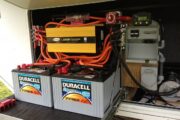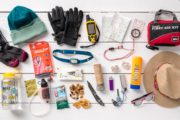Is there anything more satisfying than being off-grid, basking in the beauty of nature and enjoying complete freedom? Camping is one of life’s simple pleasures, offering a respite from the tremendously stressful world we live in. Feeling the warmth of the sun on your skin and breathing in that fresh forest air – it’s an experience like no other.
But even the most seasoned campers know that being unplugged can come with its own set of challenges. This is why packing the necessary outdoor essentials has become a crucial part of the pre-trip routine. One such item is an efficient and sturdy camping solar panel which is often our only hope for much-needed illumination and a sense of security in the darkness of night.
Which Solar Panels Are Best for Camping?
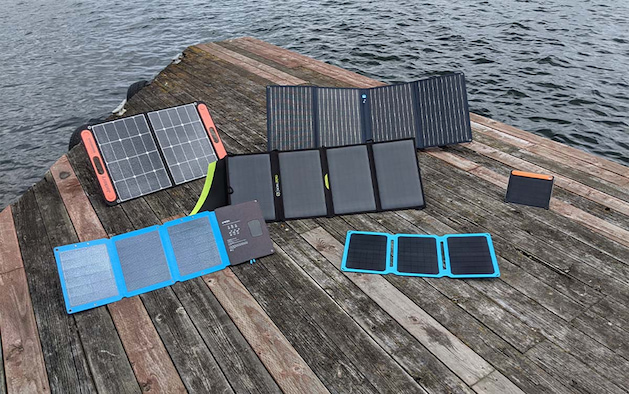
There’s no denying that a solar panel is one of the most effective ways of improving your overall camping experience. But some models may be more suitable for your needs than others, given their different qualities and features.
Monocrystalline
First up is the monocrystalline camping solar panel which is a truly efficient model that’s been around for quite some time. Designed with a single crystalline silicon cell, this particular model is noted for its excellent performance, overall durability, and resistance to extreme weather conditions.
One of the reasons why it holds up so well is because of its sleek design and lightweight construction. These panels are known for their space-saving size, often taking up less space than other, more voluminous models.
Polycrystalline
Taking things up a notch is the polycrystalline version, which is a bit different from its monocrystalline counterpart. With these panels, each cell contains multiple crystals of silicon, which take the form of a square pattern. This design allows it to absorb more sunlight, and its ability to do so in lower temperatures is definitely a plus.
The downside is that its performance isn’t quite as impressive as the monocrystalline model, with slightly lower efficiency. This is because the cells have a greater surface area, which can lead to more reflected light and therefore less energy conversion.
Thin-Film
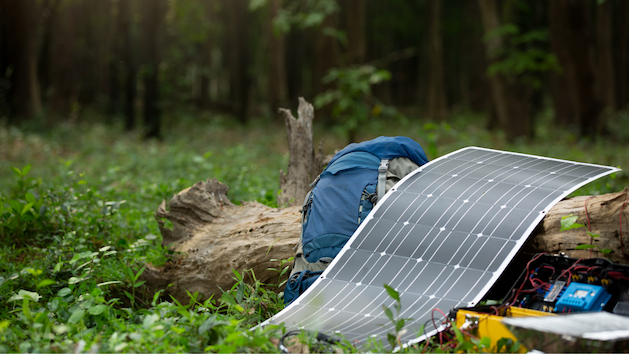
Moving on, we have the thin-film camping solar panels which are a type that’s vastly different from our previous two models, as it’s made with an ultra-thin layer of photovoltaic material, usually just a few micrometres in thickness. What makes this version so unique is its flexibility, as it can be used in a variety of applications and even attached to curved surfaces.
However, due to its thin construction, it’s not quite as powerful as the previous two models. Its inherent build also makes it quite fragile, so it’s important to take extra care when handling and storing these panels.
Amorphous Solar Cells
Last but not least, amorphous solar cells are a suitable choice for those looking for low-cost, reliable options. These panels contain films of silicon and other non-metallic materials that are much thicker than conventional thin-film models.
Since the silicon is spread evenly across the panel, it tends to produce a more consistent output. Additionally, these cells are better suited for applications in low-light settings such as shaded areas and cloudy days.
How to Find Suitable Solar Panels for Your Needs
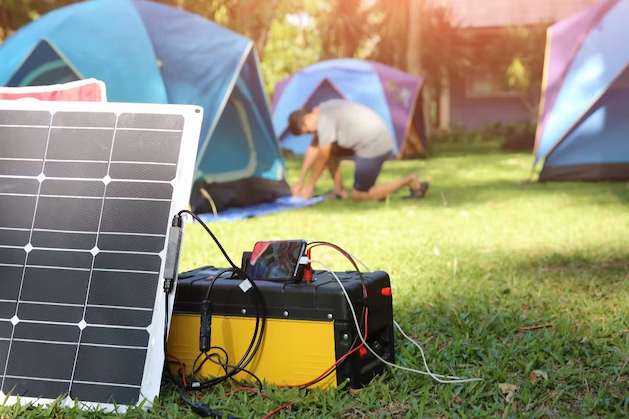
Aside from the specific features that make up each model, there are some key elements that should be considered from a practical standpoint. Oftentimes, the best camping solar panel isn’t necessarily the most powerful or expensive one – it may just be the one that ticks all the boxes when it comes to your specific needs and requirements.
Consider the Wattage
The wattage rating of a panel is one of the first things you should pay attention to, as it will directly influence the amount of power that can be produced. Generally speaking, higher wattage means more power, but you should make sure that it’s not too high to avoid overloading your battery or other power sources.
In most cases, a 100-watt panel should suffice for basic needs such as charging phones and small devices. If you plan on running or charging larger appliances, then you may want to look into higher-wattage models.
Examine Connections
The type of connections used will affect how easy it is to use and install a panel. Monocrystalline and polycrystalline camping solar panel options typically come with pre-attached cables, while thin-film and amorphous solar cells usually require additional wiring.
Depending on the setup, you may also need various adapters and connectors to get everything hooked up. The more complex the setup, the more time and effort it will take to get everything up and running.
Measure the Size and Weight
No one wants to lug around a bulky panel on their camping trip, so it’s no wonder that many campers opt for the more lightweight and compact models. Monocrystalline panels tend to be the smallest, while amorphous cells are usually the largest.
The way these panels are mounted can also affect their size and weight, with flush or foldable versions being the most portable. If you need something that can easily fit into a backpack, then you should definitely look for one of these types.
Understand the Purpose of Your Panels
How you intend to use your solar panels will determine which type is best for you. For example, if you only need it for low-wattage applications like charging phones and small devices, then you can make do with a thin-film model.
On the other hand, if you plan on using it for large appliances and other power-hungry devices, then a monocrystalline panel may be the better option. Depending on the environment, you may also want to consider an amorphous solar cell for its low-light efficiency.

